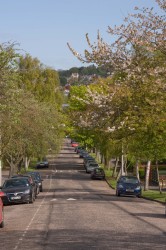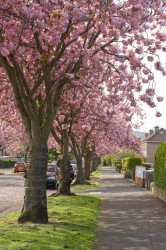Summary
Who looks after street trees – and why does it matter?


Summary
Street trees are a distinct component of urban forests and provide a wide range of social, environmental and economic benefits to communities. Forest Research investigated this amenity value. The team also assessed whether the laws and regulations that guide decisions to remove, retain, plant and exploit street trees take account of their value or the interests of all stakeholders.
Key findings
- 10 categories of amenity value, including aesthetics, safety, community strength and stability, and history
- Rules and regulations promoting the removal of street trees place clear liability upon land (tree) owners for harm caused, and there is a general lack of constraint on their management actions
- Limited resources restrict access to appropriate knowledge, so actors are unable to make ‘informed’ decisions about trees and their management in urban areas
- Formal governance promoting the retention of street trees is generally weak and often bypassed if individual trees are deemed ‘dangerous’
- Planning legislation broadly supports the retention and planting of trees in relation to new developments in the urban environment
- Informal governance is often stronger with many public and third-sector organisations having clear policies promoting the planting of street trees
- Property rights (ownership) and cultural norms are likely to affect street tree use
Publication
Further information
Street trees in the built environment
Funders and partners
Commissioned and funded by the Forestry Commission.
Status
2009-2010
